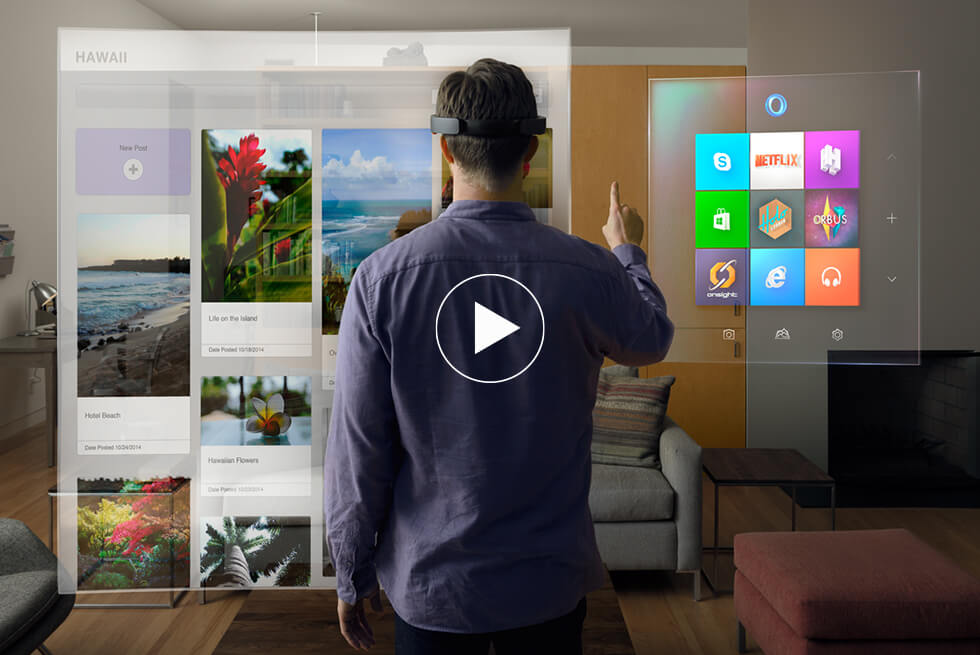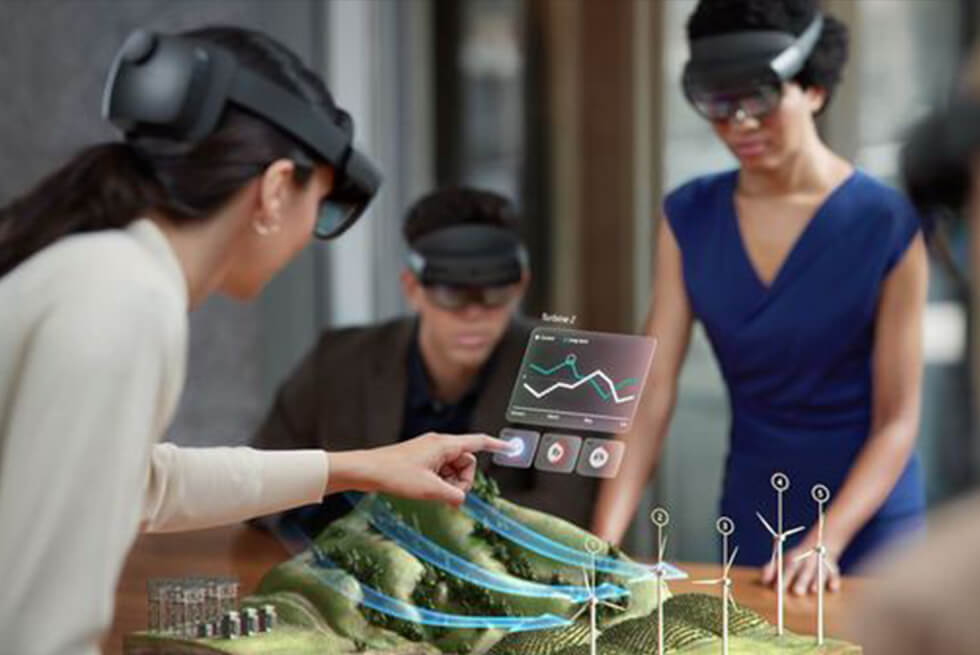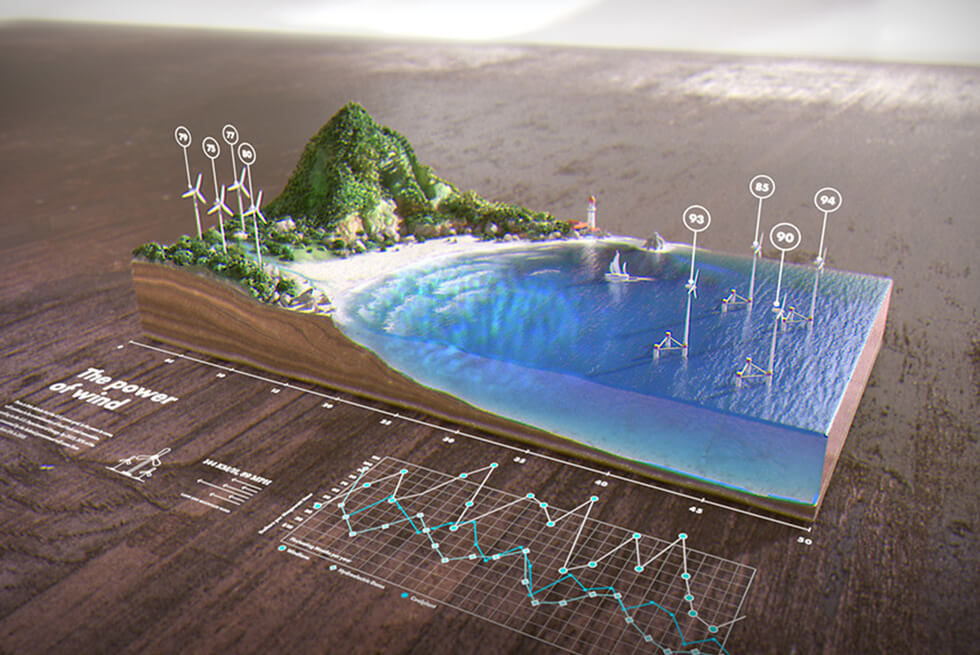Augmented reality and the HoloLens 2 – more than just a gimmick
Most people are familiar with virtual reality, or VR for short. Augmented reality technology, on the other hand, is still rather unknown to the masses – although it will have a far greater impact on our lives in the future than we realize.
Augmented reality (AR) is the connection of digital and real life worlds
The combination of reality and virtuality distinguishes augmented reality from its sister VR (virtual reality). In the latter, users are completely immersed in virtual worlds that are decoupled from reality but can appear very real. For example, VR glasses can be used to ride a roller coaster while sitting on the sofa or jump off the edge of the Grand Canyon. Augmented reality wants something different – namely, to connect the digital world with reality. AR and VR are both manifestations of the so-called reality/virtuality continuum. This continuum is used to describe the sub-areas between full reality and fully computer-derived virtuality. While pure reality and pure virtuality are clearly demarcated, the boundaries of so-called mixed reality can be fluid. If the real content predominates in the mix, we speak of augmented reality; as the proportion of virtual content increases, we move in the direction of augmented virtuality.

What is Augmented Reality all about?
Probably the best-known example of augmented reality is the game Pokémon Go. It was the first mass-market breakthrough for augmented reality apps. Similar to a scavenger hunt, players were on the move in the real world to find the hidden monsters at certain locations. However, in order to actually speak of augmented reality, a few prerequisites have to be met:
- Blending of real environment and virtual information
- Generation of 3D objects in real time
- All virtual elements must have a three-dimensional relationship to reality
- Interactive use of the information or objects
- All senses can be addressed virtually, but usually it is about optical and/or acoustic stimuli
According to these specifications, the mere combination of a photo or video with a 3D animation, for example, would not be AR, but a simple CGI effect, as is also known from the cinema. Real-time interaction is crucial, as it allows game characters to be controlled, virtual furniture to be placed in one’s living room, and much more. Augmented reality software can do much more than just fill games with content. In industry, AR has long been used in the development of aircraft, vehicles and many other products. In this way, development steps in the design of car interiors, for example, can be completed without expensive prototypes, which, on top of that, can be adapted to new ideas or wishes in real time. But other sectors of the economy also benefit from AR.
The use in daily life
Even if we often don’t even notice it, AR has long been part of our daily lives. When graphics with distance information, trajectories of the ball or other elements are added to the real TV picture as a matter of course during soccer broadcasts on TV nowadays, these are no longer mere graphics, but interactive 3D elements that adapt to the movement of the picture content and can be supplemented by additional information for the viewer. Perhaps you drive a modern car with a Head Up Display? Originally, this was a development for the military to mirror the most important information directly into the field of view of combat pilots. Today, there are many vehicle models that display not only the speed but also the complete navigation in the field of vision. Some manufacturers already offer an augmented reality head-up display that can be used to display real-time warnings while driving, for example if the vehicle detects a deer and highlights it visually.
With HoloLens 2, augmented reality solutions can be implemented at a professional level, contact us and buy Hololens 2 now.
More than just entertainment
Haven’t you ever wished that you could immediately find the product you want on the right shelf in the supermarket without a long search? With augmented reality apps on your cell phone, this will no longer be a problem in the future, because the graphics will show you the exact location in real time, including price, weight or, if applicable, consumer information or ratings from other customers. The development of augmented reality glasses could thereby replace the view of AR apps on the cell phone in the medium term and make AR a constant companion in everyday life. Accessibility applications can make life easier for people with disabilities. Does this restaurant have a ramp for wheelchairs? Does the elevator in the subway station work? Even automatic subtitling of lip movements for the hearing impaired or real-time description of obstacles for the visually impaired are conceivable in the long term with augmented reality glasses and headsets.
Conclusion: Augmented reality will become much more present in the future
Commercial applications are not the only area in which augmented reality software will change our lives. In education, for example, undreamed-of possibilities arise because learning content can be supplemented and expanded by virtual information. Even going to a museum today is already becoming much more informative and interactive thanks to AR apps on smartphones. In the future, we will use many AR applications as a matter of course in our everyday lives – and are already doing so today in some cases.



Leave A Comment